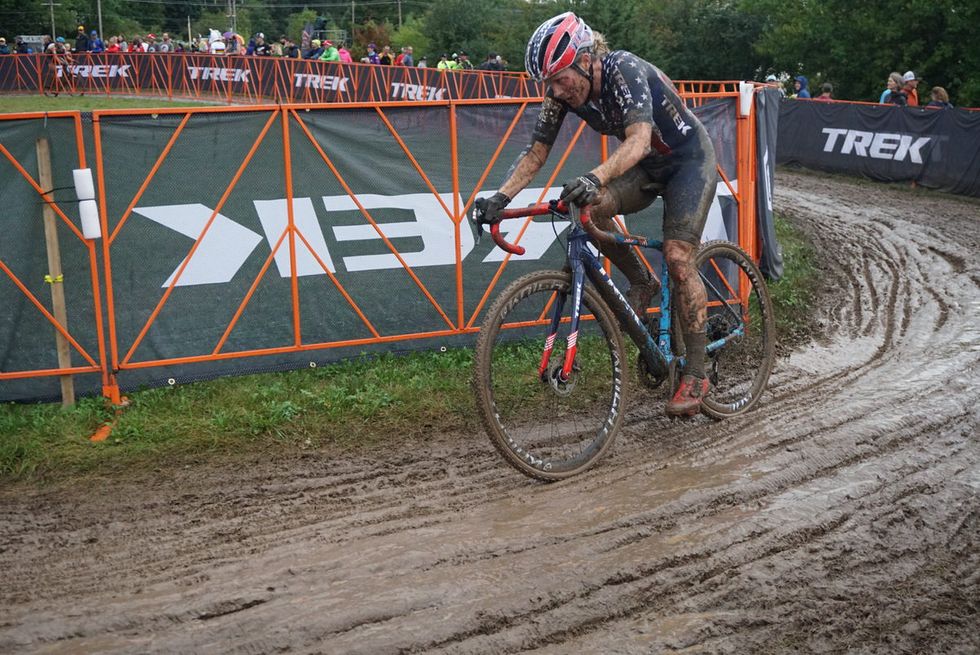

| Po Box 6604 Annapolis, MD 21401 |
|
| jon@nucomwebhosting.com | |
| 877.881.6837 |

Katie Compton’s career hasn’t always been smooth sailing. While the 41-year-old cyclocross racer has a record 15 national championship titles and over 100 UCI wins—making her the most successful ‘cross racer in U.S. history—Compton has been plagued with allergy-induced asthma attacks, recurring leg pain due to a gene defect, and plenty of injuries.
We caught up with Compton before the World Cup in Waterloo, Wisconsin, to find out more about how things like fruits, vegetables, grass-fed meats, eggs, and potatoes fuel her muddy races and rides. Here’s what she had to say.
I’ve been eating an anti-histamine diet for many years now to deal with my allergies, so I avoid things such as alcohol, gluten, and even certain fruits and vegetables that are high in histamines. But I eat quinoa, grass-fed meat, and other low-histamine foods. An anti-histamine diet helps reduce my symptoms like my troubled breathing during races. During allergy season and cyclocross season, I’m outside a lot, and I need to breathe really hard, so I’m especially strict with limiting high-histamine foods. During the off-season, I’ll relax it a bit since there are a lot of high-histamine foods that are still really healthy, like avocados, tomatoes, and citrus fruits. If I don’t have hard workouts, I like to have that balance and eat the fruits and vegetables that I avoid the rest of the year.
On the road, I get a lot of potatoes, buckwheat, and quinoa. But actual fast food-type options are really hard when traveling. Chipotle is a go-to in the U.S., since I can get the fajita salad there. And a lot of cafés now have quinoa bowls. There are more gluten-free options now, but since I can’t eat rice either, it’s still a little challenging. But on the bright side, a lot more bars have cider options now.
For breakfast, sometimes I want a big protein breakfast. I do some hardboiled eggs, some turkey or ham, and a little cheese. Then, sometimes I want a big carb breakfast, where I’ll do a big bowl of a buckwheat base with nuts, milk, and whey protein. It’s kind of like a big bowl of cereal, but it’s complex carbs, low sugar, good protein, and fat—so I’m not starving again in an hour. My breakfast depends on my mood and what I have planned for a ride. If I have recovery riding planned, I usually end up with more protein. If I have a long ride, I do a more carb-heavy option. Lunch and dinner are usually a sweet potato or potato base with a protein, some vegetables, and some healthy fat. I keep it pretty simple.
I try to get 20 to 30 grams of protein per meal—at least—since it’s important for recovery. I also supplement with high-quality amino acids, collagen peptides, and whey proteins to top off after workouts. I pay close attention to my protein intake now—for me, having that balance of protein, good carbs, and healthy fats is so key.
Avocado oil potato chips are my weakness. Add a Snow Capped hard cider and after a tough ride, that’s my treat. I’ve had to give up a lot of foods over the years, but I’ve gotten really into baking, so I’ve been able to recreate a lot of recipes without using wheat. The hardest thing for me is not being able to just randomly eat a cake or pastry at a party, or that I can’t just grab a croissant at a nice bakery—that makes me sad. But I’ve figured out how to make some great baked goods using almond flour, kasava flour, and Bob’s Red Mill Paleo Flour. Almond flour is such an easy substitute, but you have to adjust the liquid and go a little less. You have to get the oil to flour ratio right to avoid it being too wet on the inside.